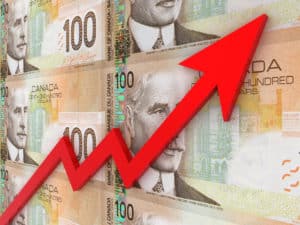This past weekend, investors had the opportunity to read about a looming strike at Canadian Pacific Railway Limited (TSX:CP)(NYSE:CP), which could have a detrimental effect if it becomes a prolonged strike. As investors are aware, however, there are times the market can get things wrong for a long time.
Going back only a matter of months, Ontario Colleges chose to take to the streets for a variety of reasons, which almost led to the cancelling of a semester and potentially disastrous consequences for students and politicians alike. With many voters (or their children) in school, the government stepped in and legislated that Ontario Colleges re-open for business. Eventually, things came to an end, and business went on as usual.
In the case of the country’s second-largest railroad, the solution may not be that simple. After an incredible five-year performance for both the Canadian economy and the share price alike, employees feel (and should feel) perfectly comfortable in asking for significantly better wages and/or working conditions. Essentially, all parties have benefited from their hard work, so they should as well.
The current problem facing management (and investors) is the very high share price of the very profitable company. At a price of almost $225, investors buying today are forced to pay close to 12 times earnings and receive a dividend yield of no more than 1%. We have to remember that this is a very capital-intensive business that requires substantial capital expenditures on an annual basis. The profit is not all available to shareholders.
Shares of competitor Canadian National Railway (TSX:CNR)(NYSE:CNI) have not fared as well, declining by close to 10% over the past year. Given the lower share price, the price-to-earnings (P/E) multiple is closer to 10 times, just as the dividend yield has increased to almost 2%.
When stacking up these two Canadian juggernauts, it is worth noting that Canadian National Railway has a substantially bigger market capitalization than smaller brother Canadian Pacific Railway, which has resulted in substantially higher profits over the long term. The uncertainty that a strike brings on is nothing that customers appreciate, even if it ends up being no more than a smokescreen. Essentially, business becomes a little more challenging to do, as more firms move to the well-known competitors that don’t have the risk of a strike detaining their shipments.
With a declining P/E ratio and a higher dividend yield, investors may want to reconsider their holdings in Canadian Pacific Railway. The market could be saying something to investors, given that these metrics are looking more attractive in spite of the presence of any reasonable catalyst.
When we look back to the crisis of 2008/2009, the highest share prices did not come in 2008; instead, stocks were flying high in 2007. As the expectations for growth in corporate profits stabilizes, many investors are no longer willing to pay up for stocks, even the highest-quality ones. Instead, valuations become reasonable, and the chance of a recession looms.







